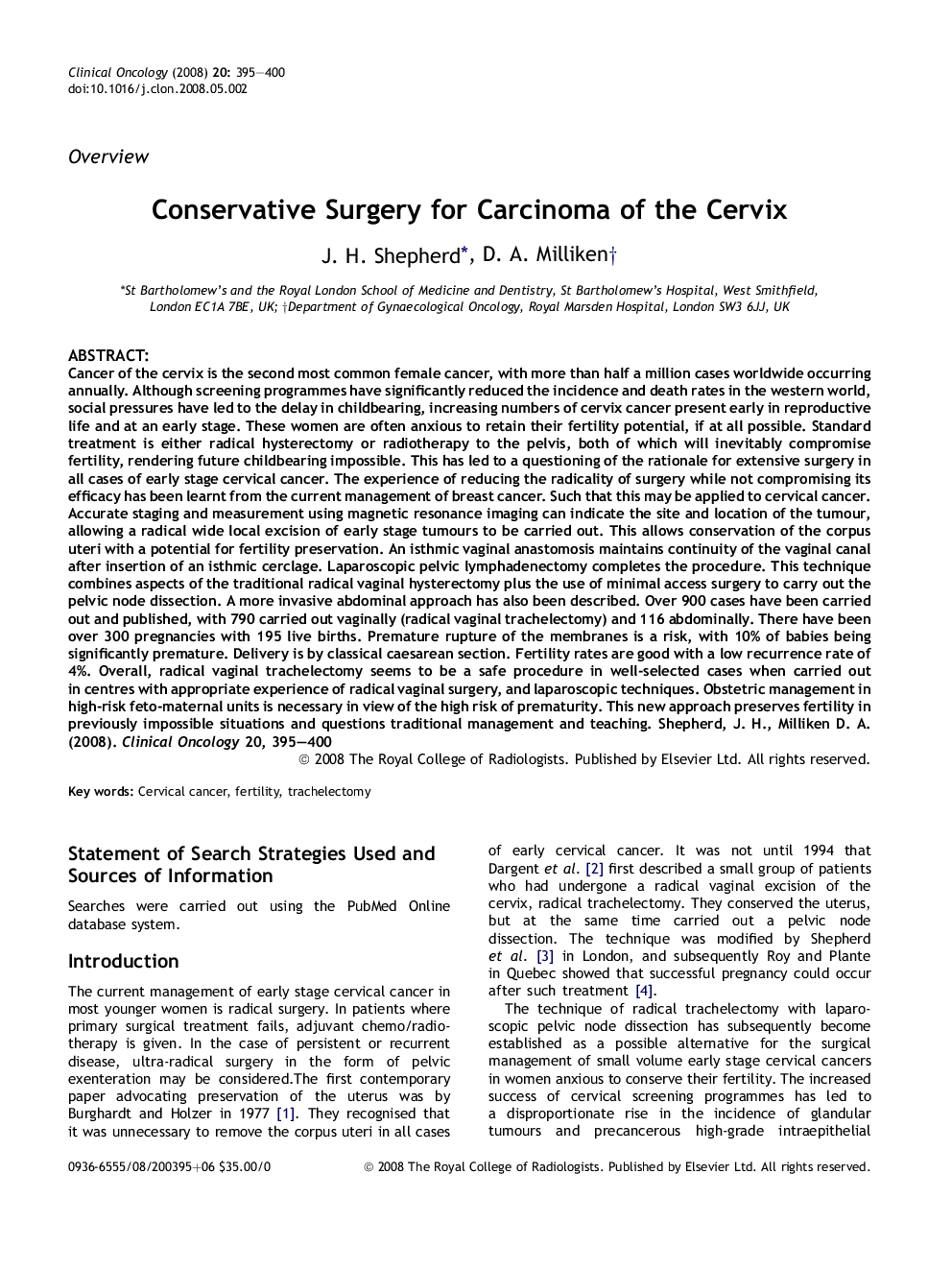| Article ID | Journal | Published Year | Pages | File Type |
|---|---|---|---|---|
| 5699802 | Clinical Oncology | 2008 | 6 Pages |
Abstract
Cancer of the cervix is the second most common female cancer, with more than half a million cases worldwide occurring annually. Although screening programmes have significantly reduced the incidence and death rates in the western world, social pressures have led to the delay in childbearing, increasing numbers of cervix cancer present early in reproductive life and at an early stage. These women are often anxious to retain their fertility potential, if at all possible. Standard treatment is either radical hysterectomy or radiotherapy to the pelvis, both of which will inevitably compromise fertility, rendering future childbearing impossible. This has led to a questioning of the rationale for extensive surgery in all cases of early stage cervical cancer. The experience of reducing the radicality of surgery while not compromising its efficacy has been learnt from the current management of breast cancer. Such that this may be applied to cervical cancer. Accurate staging and measurement using magnetic resonance imaging can indicate the site and location of the tumour, allowing a radical wide local excision of early stage tumours to be carried out. This allows conservation of the corpus uteri with a potential for fertility preservation. An isthmic vaginal anastomosis maintains continuity of the vaginal canal after insertion of an isthmic cerclage. Laparoscopic pelvic lymphadenectomy completes the procedure. This technique combines aspects of the traditional radical vaginal hysterectomy plus the use of minimal access surgery to carry out the pelvic node dissection. A more invasive abdominal approach has also been described. Over 900 cases have been carried out and published, with 790 carried out vaginally (radical vaginal trachelectomy) and 116 abdominally. There have been over 300 pregnancies with 195 live births. Premature rupture of the membranes is a risk, with 10% of babies being significantly premature. Delivery is by classical caesarean section. Fertility rates are good with a low recurrence rate of 4%. Overall, radical vaginal trachelectomy seems to be a safe procedure in well-selected cases when carried out in centres with appropriate experience of radical vaginal surgery, and laparoscopic techniques. Obstetric management in high-risk feto-maternal units is necessary in view of the high risk of prematurity. This new approach preserves fertility in previously impossible situations and questions traditional management and teaching.
Related Topics
Health Sciences
Medicine and Dentistry
Oncology
Authors
J.H. Shepherd, D.A. Milliken,
